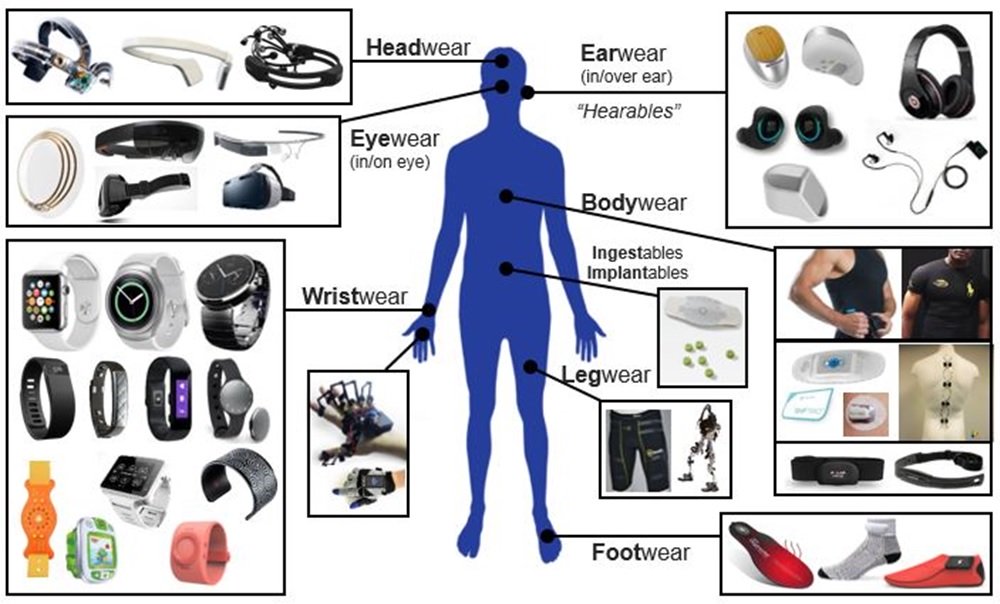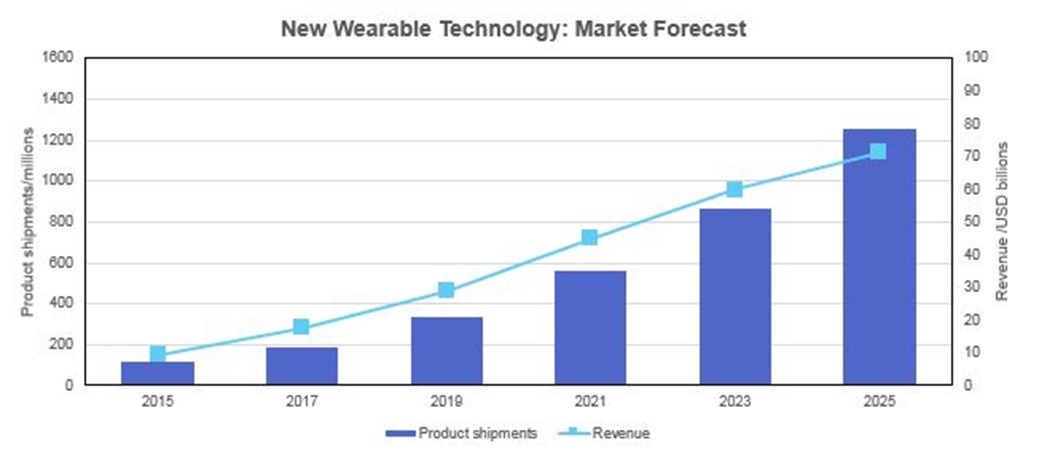Cutting through the hype and noise – what’s the real deal with wearables?

©iStock.com/Hasloo
These days, it can be hard to keep up with not just the number of techno buzzwords that have invaded our consciousness – infotainment, wearables, Internet of Things – but what’s really behind the hype. Don’t misunderstand – there are a lot of exciting developments in these areas that are making their way into consumer products, as you’ll see shortly. But when technical terms keep popping up over and over, they can invade our conversations before we fully comprehend what each of them means. As a result, we are confused about what’s really out there.
There are actually several dozen smart electronic devices currently on the market that can be worn on the body. As the examples below show, these include not only the familiar wrist-worn and clip-on fitness bands and watches, but also arm bands, head- and shoe-worn devices, and clothing.
Because a great deal of the functionality tends to focus on measuring and tracking such health parameters as steps taken, heart rate and sweat output, it’s natural that these devices have initially been most strongly embraced by the makers of sports and fitness products. But which of these products will survive and even thrive? What else that qualifies as “wearable” is on the horizon? And what role does the electronic display play in driving these advances?

Figure 1. Applications for wearable devices (Source: IDTechEx Wearables Report)
Market trending up, focus to shift
“Whilst many mature incumbent markets have existed around wearable technology for many years, new wearable devices are driving strong growth across the entire sector. 2015 saw the first billion-dollar products in this sector, and with many new product types beginning to approach maturity, we expect sustained growth over the coming decade,” says James Hayward, technology analyst at IDTechEx, a leading market research firm.

Figure 2. Global shipment and market revenue forecast for wearable technology (Source: IDTechEx)
In the short term, the makeup of the consumer wearables market will continue to be dominated by wrist-worn devices, with the majority of product development focused on new-generation smart watches. Most of the smart watches are made by technology startups and consumer electronic giants that focused on technical features in their development. The smart watch on my wrist can count steps, show incoming calls and messages, display weather data, alert me about my next appointment – all useful features, but the watch itself is bulky, communicates to me via an annoying haptic buzz and will probably not win any awards for design in the traditional wristwatch industry.
As a geek, I love all smartwatches, but they don’t quite make the same statement that a Rolex does, and I don’t see friends and colleagues parting with their traditional high-end watches. Yet, millions of not-so-great-looking smart watches have been sold in the past year. And their novelty has worn off sufficiently that consumers are increasingly demanding the kinds of aesthetically pleasing designs typically associated with traditional high quality wristwatches. As a result, we’re seeing such high-end brands as TAG Heuer, Bulgari and Gucci – to name a few – dipping their toes into the smart watch pool, with curved and uniquely shaped displays helping bring some of these elegant innovations to life.
Designers will also increasingly develop smart jewellery – rings, necklaces, earrings, bracelets – embracing integration of smart devices that marry fashion with function. Similarly, we will see growth in development of clothing with built-in electronics, thanks to flexible devices. Not only are they thin and light, but they also conform to the body. We expect to see sensors and actuators integrated that can provide a sort of “body GPS,” telling you both where you are and if someone else is getting too close to your personal space – kind of like the forward collision warning sensor in your new car. In addition, nanotechnology is being utilized in the clothing to provide superinsulation, with sensors noting your condition (cold, hot, dehydrated, etc.) and connectivity that can send out an SOS if you fall or are injured if you are hiking in the wilderness or by yourself at home.
The area that will really take off between now and 2019 in the wearables space is infotainment –a key component of which is augmented and virtual reality (AR/VR) devices. Interest around AR/VR at the Consumer Electronics Show in January seems to bear this out. Not only did the space dedicated to gaming and VR increase by 68 percent compared to 2015 (22,000 square feet), with exhibitors including Oculus VR and NASA, but CES 2016 also marked the first time the show featured a dedicated AR space – 5,000 square feet of exhibits from companies like Sony Electronics, Royole and Infinity AR.
Many areas besides gaming can benefit from AR/VR, such as education. Using these systems, and adding haptics – touch technology that uses force on the skin to deliver tactile feedback – children in dry parts of Africa, for example, can not only learn about the rain forest, but can actually experience being in pouring rain with the combination of visual, auditory and sensory experiences. Teaching can become a much richer experience through the use of VR/AR technology, enabled by displays with excellent optical quality (more vivid colors, better viewing angles, faster response time).
Nearly all of the applications cited above must convey large amounts of information on small (even miniscule) displays, which must deliver high brightness and resolution with very low power consumption. Moreover, most made their first public appearance, years ago at the annual Display Week conference and exhibition, being held this year in San Francisco. To learn more about what’s on the horizon for wearables, I invite you to visit the City by the Bay, May 22-27 – I guarantee it will be a “wearing” experience in the best sense!
 Interested in hearing industry leaders discuss subjects like this and sharing their IoT use-cases? Attend the IoT Tech Expo World Series events with upcoming shows in Silicon Valley, London and Amsterdam to learn more.
Interested in hearing industry leaders discuss subjects like this and sharing their IoT use-cases? Attend the IoT Tech Expo World Series events with upcoming shows in Silicon Valley, London and Amsterdam to learn more.
The show is co-located with the AI & Big Data Expo, Cyber Security & Cloud Expo and Blockchain Expo so you can explore the entire ecosystem in one place.

Leave a comment
Alternatively
This will only be used to quickly provide signup information and will not allow us to post to your account or appear on your timeline.